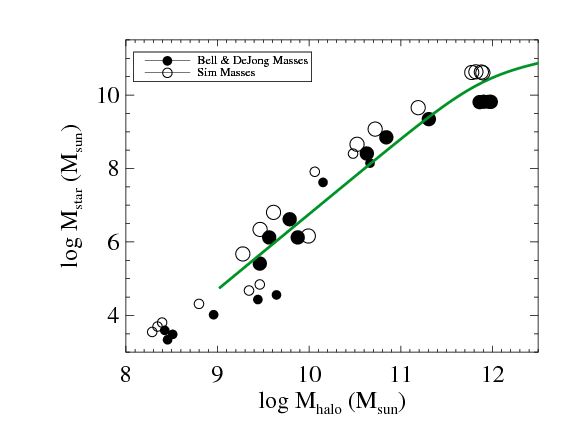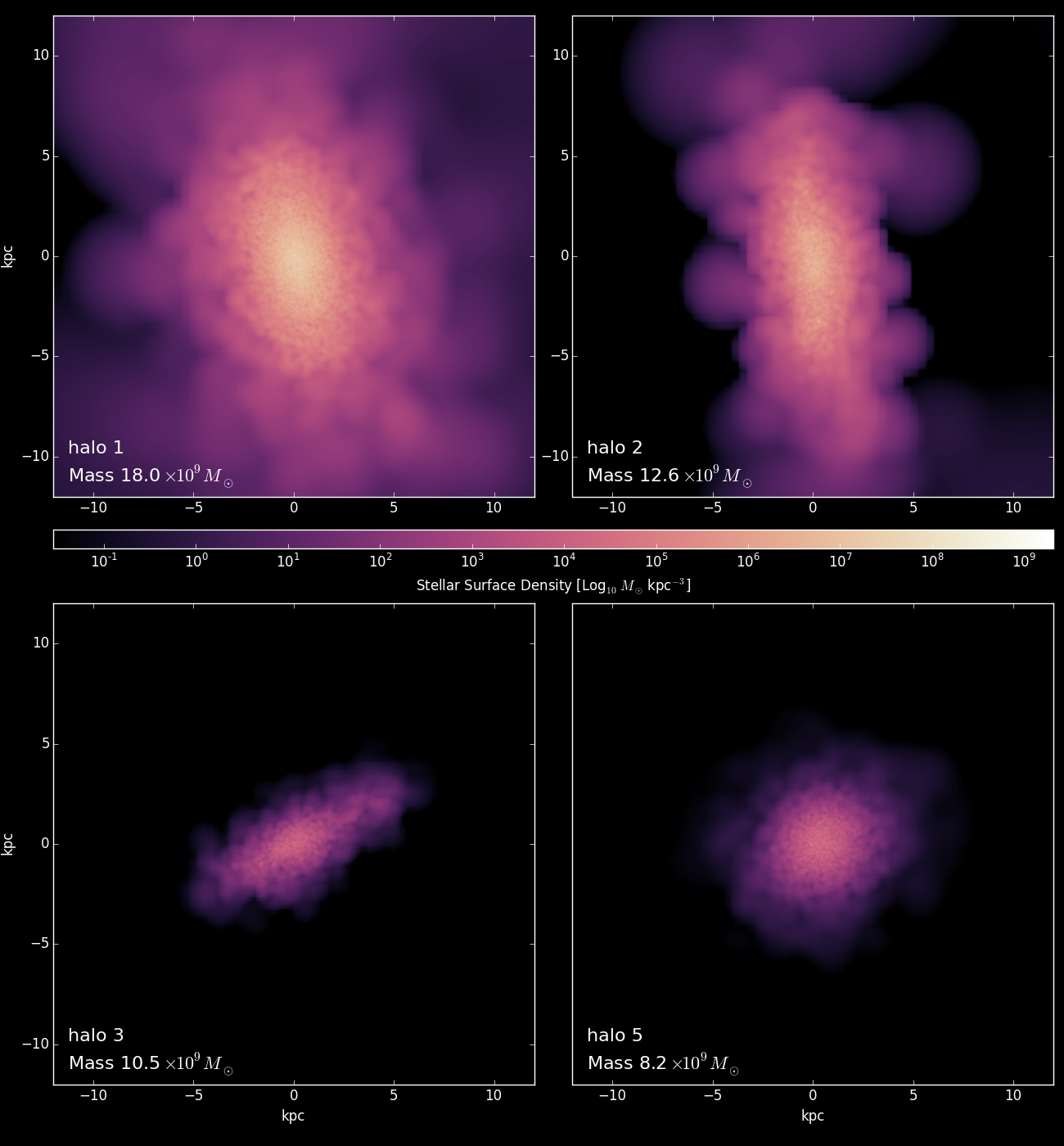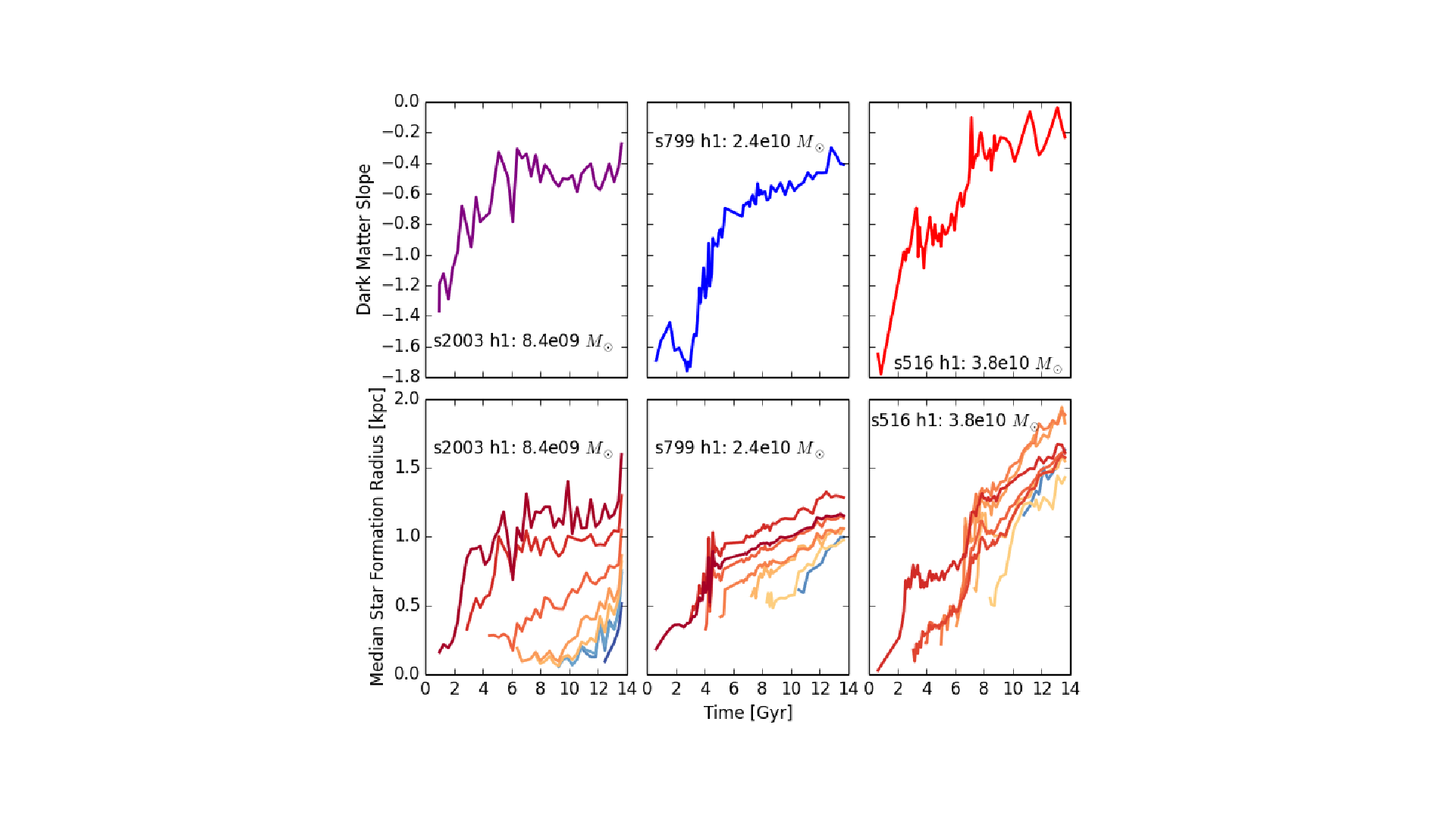Stellar to Halo Mass Relationship

As part of my thesis work, I have measured the SHM (stellar mass – halo mass) relation for a set of field galaxies simulated in a LCDM cosmology and compared it with the redshift zero predictions based on data from the SDSS and the Abundance Matching Technique. The comparison revealed very good agreement in normalization and shape over five orders of magnitude in stellar mass. This agreement between simulations and observational data is due to two systematic factors: 1) An implementation of SF that relates the SF efficiency to the local H2 abundance in resolved star forming regions, resulting in localized feedback that significantly lowers the SF efficiency and 2) “observing” the simulations to properly compare them to observational estimates of the SHM relation. This approach involved creating artificial photometric light profiles of the simulated galaxies and estimating stellar masses based on aperture magnitudes. Importantly, it also requires coupling the stellar masses to halo masses derived from DM-only simulations, rather than the baryonic simulations. Our analysis shows that adopting photometric stellar masses contributes to a 20-30% systematic reduction in the estimated stellar masses. This systematic effect is further exacerbated by the use of aperture based magnitudes, adding another 20-30% due to neglecting the contribution of low surface brightness populations. Finally, a third systematic effect comes from a difference in halo masses in collisionless (DM-only) simulations vs simulations including baryon physics and outflows. Baryon mass loss makes halo masses smaller by up to 30% when calculated at the same overdensity.
Studying the Star Forming ISM

In my 2014 paper, I provide evidence that ISM pressure and possibly the IMF is redshift dependent. I examined the ISM pressures during the formation of the present-day bulge and disk. In general, at early times, star formation occurs at higher pressures- specifically higher densities. Because the present-day bulge predominantly forms early in the galaxy’s history, it forms at higher pressures than the present-day disk. If ISM pressure and IMF are related as postulated in Krumholz (2011); Conroy & van Dokkum (2012), we have evidence for a redshift dependence of the IMF and further, that bulge stars formed with a different IMF from disk stars. Furthermore, we show that even at high redshift, bulge stars and disk stars in general, are forming at higher pressures, regardless of formation radius. This further supports the redshift dependence of ISM pressure: we see that in the young protogalaxy stars form in a high pressure disk, regardless of classification at z = 0. In this analysis I also examine the differences in metallicty and H2 fraction between bulge and disk, to isolate why the early protogalaxy is at high density (and thus high pressure). I find that bulge stars form from gas with higher H2 fractions and even when holding metallicity constant, bulge stars form from denser gas. These trends point toward the high redshift progenitors having more dense gas, likely as a result of early rapid gas accretion.
The 40 Thieves: A Suite of Extremely High Resolution Dwarf Galaxy Simulations

I am currently writing a series of papers which present results from a fully cosmological, extremely high-resolution simulations of a cosmological sheet of dwarf galaxies utilizing the new N-body + SPH code ChaNGa. The dwarf sample covers a wide range in stellar and halo masses and shows excellent agreement with observed properties of dwarf galaxies, including metallicity, stellar masses, and gas content. We are utilizing this simulation to quantify the scatter in the low mass end of the SMHM relation: the scatter increases by nearly an order of magnitude over two decades in halo mass. Furthermore, we show that there is no unique SMHM relation for the faintest galaxies due in part to both the significant increasing scatter in stellar masses for a given halo mass and the scatter in stellar masses for a given halo mass. Finally, we can also quantify the abundance of dark halos using this simulation. These dark halos are dark matter halos that are devoid of stars and have very low gas surface densities if gas is still present. In fact, only the 7 most massive of our halos have HI masses that are detectable by today's surveys. We find that the fraction of dark dwarfs at a given halo mass increases drastically as a function decreasing halo mass, with nearly 80% of halos remaining dark at the lowest halo masses we can resolve.
Radial Gradients in Dwarf Galaxies

Observations of dwarf galaxies show that the age of the stellar population with increasing radius, creating the appearance of outside-in galaxy formation. We can demonstrate that dwarf galaxies not only grow from the inside-out, but that the age gradient evident at z = 0 is created because the older stellar populations move outward with time. This migration is a direct result of the flattening of the dark matter halo. Thus the stellar age gradient in dwarf galaxies is direct observational evidence of the evolution of a dark matter potential as it is effected by baryonic processes.
© 2013 Ferah Munshi
Template design by Andreas Viklund